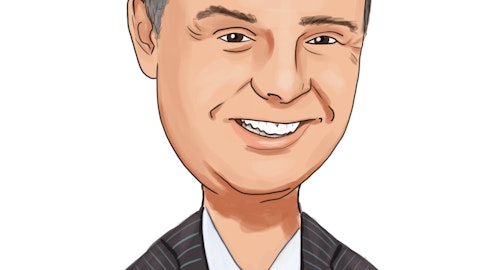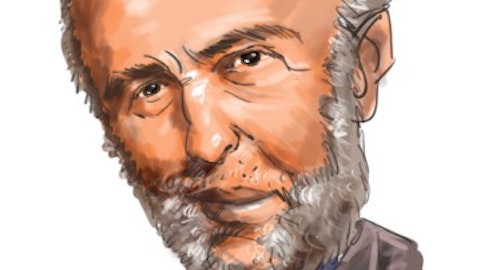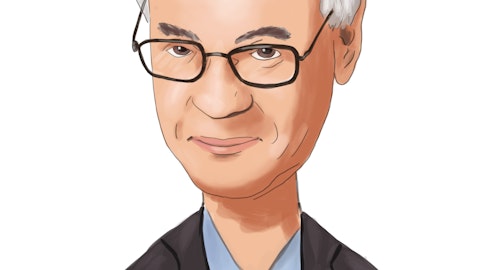Feddie Strickland: The core. Got it.
A – Jude Melville: Got it. Yes. Feddie, one thing that I’d add, if we look at the loan beta during the quarter, some of the date were up 75% on new loan yields. And we look at the total portfolio of betas, they were around 30%. So I think what you saw some of it was not as much repricing in the fourth quarter, which we do expect to accelerate as that fixed rate portfolio turns over through the balance of the year, but we do still expect 60% plus loan betas on new loan yields.
Feddie Strickland: Got it. No, that makes a lot of sense. And then one more for me, and I’ll step back in the queue. Just loan growth outlook. It seems like you had another strong quarter here. Do we see things start to slow down a little bit from here? Or do you think you can continue kind of the growth rate that you saw in the fourth quarter?
Jude Melville: So we’re anticipating kind of low double digits, kind of low teens. We had a strong fourth quarter, but definitely a slowdown growth on a percentage basis from the third and second. And some of that was slow down, but some of it also was us managing, making decisions. Part of the positive loan data on new loans is the result of us being maybe more disciplined on pricing. And so we’ll continue to do that. And we think it’s — over the next year, it’s a little bit of important trade-offs where rates are growth versus pricing, and we want to manage that. But we still feel like we have — we’re in the right markets, not just Texas but also our North Louisiana market is doing really well. Our capital region, we’re the strongest local bank here in New Orleans is catching on.
So we feel like — as I mentioned in my opening comments, the teams that we picked up earlier in 2022 are clicking, and we thought there’s more capacity there as well. So we feel good about our ability to continue to grow low to mid-teens and then it will be kind of a question of what’s the best use of our balance sheet. So you’re not going to — unlikely you’ll see the 35% — 34%, 35% organic loan growth that we had over the past year. But I think it will still be productive and moving in the right direction.
Feddie Strickland: Got it. Thanks guys for taking the questions and congrats on a great quarter.
Operator: Graham Dick with Piper Sandler. Your line is open.
Graham Dick: Hi, good morning gentlemen.
Jude Melville: Good morning Dick.
Graham Dick: I just wanted to circle back to the NIM, specifically on the deposit side of things. I think you guys talked about a 30% total deposit beta previously. Obviously, you said you guys lock in some funding this quarter, and it seemed to accelerate closer to 40% specifically in this quarter. So I just wanted to hear any updated thoughts you guys have here on where the cumulative beta might shake out by the time rate hikes are done. And then also, what kind of trends around noninterest-bearing deposit balances are embedded in those assumptions?
Jude Melville: Yes. What we saw in the betas, you’re right, over the fourth quarter was about a 40% beta. It really was made up of really 3 categories to now can markets and time deposits. Those are around 60% beta in those 3 select categories, and that was the driver, obviously, of the 40% data. We think going forward in Q1 because of the way we price progressively in Q3, early Q4, those would come down more in the 40% to 50% range on our now money market rate and still the time deposit betas because of the nature of the market, still probably going to remain 50% range for Q1, and then I’ll let Matt talk about really the betas for the balance of the year, what we’re seeing.



